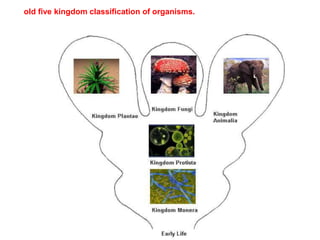The document discusses viruses and compares the key differences between prokaryotic and eukaryotic cells. It notes that viruses are not cells and cannot reproduce without a host. They have either DNA or RNA, but not both, and do not metabolize energy. The document then provides more details on specific aspects of viruses, including their structure, types based on capsid symmetry, examples of virus shapes under electron microscopes, and the two methods of viral replication - lytic and lysogenic cycles.















































































































































